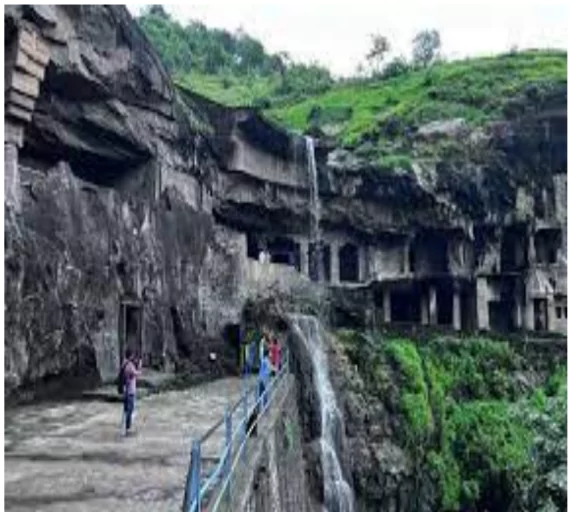Introduction
The Ajanta Caves, located in Maharashtra, India, are renowned for their exquisite rock-cut Buddhist cave temples, adorned with intricate paintings and sculptures, showcasing the height of ancient Indian artistry.

About Ajanta Caves
- Location: Ajanta is a series of rock-cut caves, all arranged in a horse-shoe shape, located in the Sahyadri hills by the gorge of the Waghora River in the Aurangabad district of Maharashtra.
- Number of Caves: It has 29 caves – 25 were viharas, and 4 were chaitya.
- Features: The Ajanta caves were inscribed by the Buddhist monks under the patronage of the Vakataka Kings; Harisena being a prominent one.
- Sculpture of Buddha: In Ajanta caves, the sculpture of Buddha in the garba-griha is in the classical model.
- Heaviness is the general character of the sculptures. Sculptures of Yakshis and Hariti with children are significant.
- The popular Bodhisattva Avalokitesvara is depicted in paintings and sculptures.
- Cave no.26: It is the biggest and is carved with a variety of Buddha images, the biggest one being the Mahaparinibbana image.
Enroll now for UPSC Online Course
Ajanta Caves: Exploring Ancient Chaityas and Magnificent Paintings
- Ajanta caves has four chaitya caves datable to the earlier phase (the second and the first century BC) (Cave No. 10 and 9) and the later phase the fifth century AD (Cave Nos. 19 and 26).
- It has large chaityaviharas and is decorated with sculptures and paintings.
- Ajanta is the only surviving example of painting of the first century BC and the fifth century AD.
|
Enroll now for UPSC Online Classes
Conclusion
- Ajanta Caves stand as a testament to the artistic brilliance and spiritual devotion of ancient Indian craftsmen, offering a window into the rich cultural and religious heritage of the region.
![]() June 7, 2024
June 7, 2024
![]() 2547
2547
![]() 0
0
